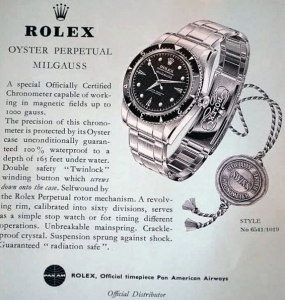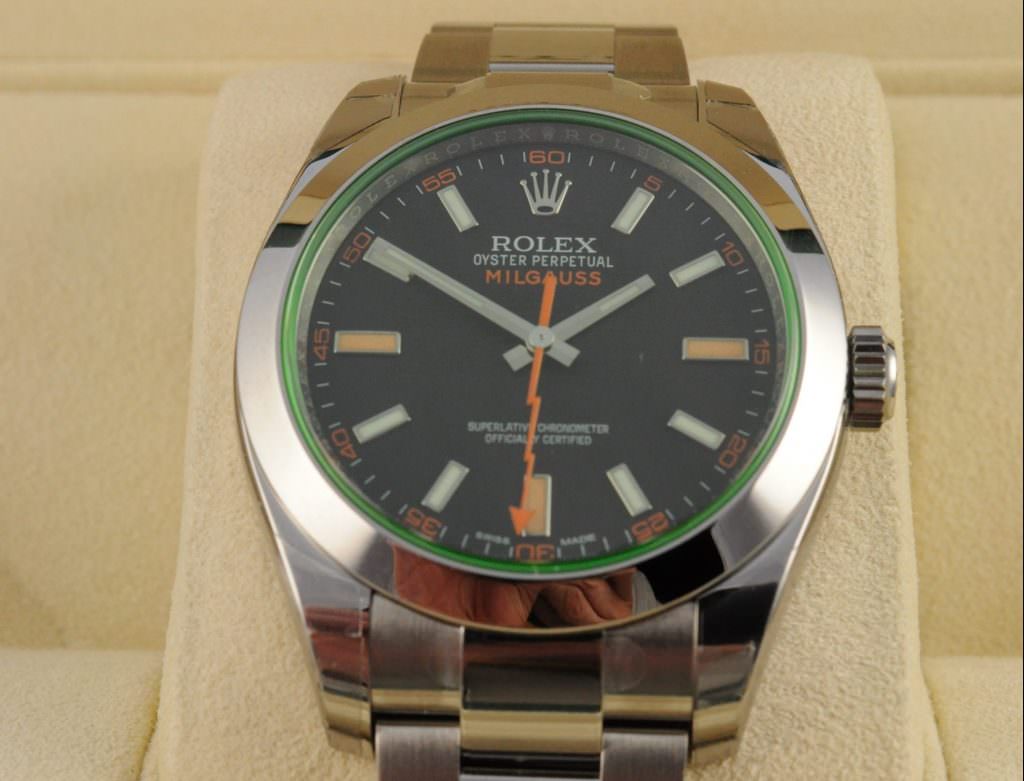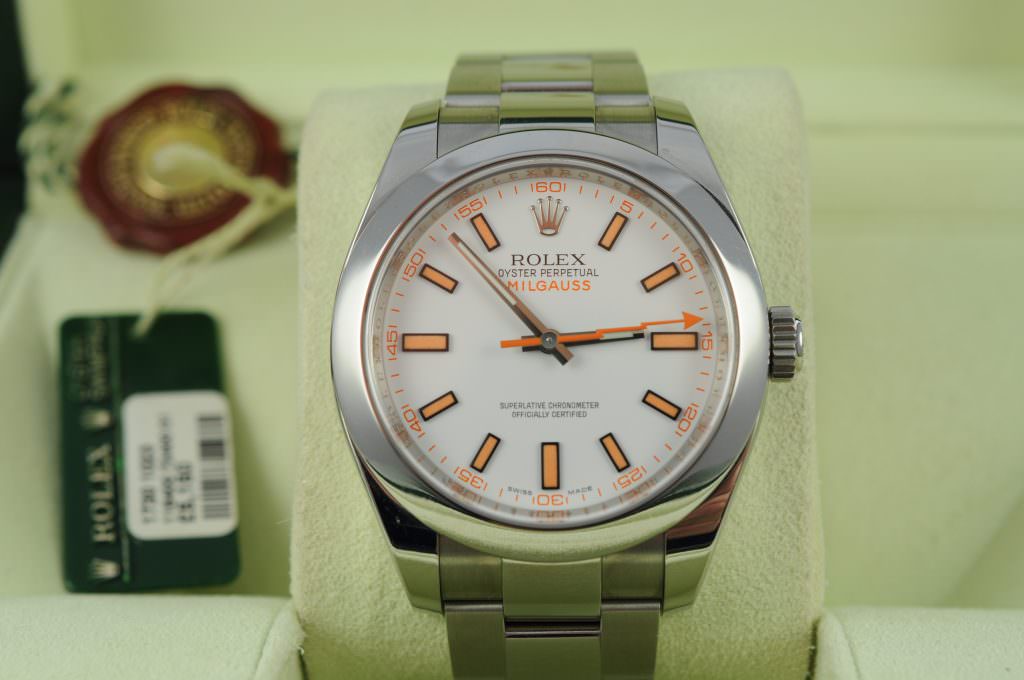The name Milgauss is a word created by Rolex, Mil comes from Mille, French for 1000, and Gauss, a unit of measurement of magnetic fields. The Rolex Milgauss is a watch designed by Rolex to withstand high levels of electromagnetism, originally designed for scientists and other professionals. Here at Edinburgh Watch Company, we love telling our customers about the history of the watches they’re buying. Like the Rolex Milgauss, most of them are fascinating.
What makes the Rolex Milgauss Special?
 The world had entered the Atomic age and scientists wanted a wristwatch to cater to their needs. Diver’s watches needed water-resistance, pilot’s watches needed legibility and scientist’s watches needed magnetic-resistance.
The world had entered the Atomic age and scientists wanted a wristwatch to cater to their needs. Diver’s watches needed water-resistance, pilot’s watches needed legibility and scientist’s watches needed magnetic-resistance.
Before the days of the Milgauss, scientists and other like professionals had a problem; an electromagnetic field greater than 50 to 100 gauss would greatly disrupt the timing of a watch. They either had to deal with a dysfunctional timepiece, or simply not wear a watch. However, the release of the Milgauss changed that. Tested in the 1950s by the European Organization for Nuclear Research (CERN), the world’s pre-eminent particle physics laboratory, it was determined that the Milgauss resisted magnetic fields up to 1,000 gauss. This was a huge technological advancement, not only for Rolex, but for the scientific community.
Despite its special features, the Milgauss line was discontinued in 1988. For nearly 20 years, the Milgauss was nearly forgotten. Then, in 2007, Rolex revisited their “scientist’s watch,” releasing three new versions of the new model ref. 116400. The three versions vary slightly. The first two feature either a black or white dial with a standard colourless sapphire crystal. The special Glace Verte (GV) or “Anniversary” model features a black dial with a slight design difference, highlighted by a green-tinted sapphire crystal. The Glace Verte is named for this tinted glass insert, and is the only Rolex to feature this special edition.
The newly released Milgauss features several new technological advances. To increase the Milgauss’s resistance to magnetic fields, the new model includes a shield inside the Oyster case made of ferromagnetic alloys specifically chosen by Rolex. The shield surrounds and protects the movement, ensuring it runs accurately.
The current model is also equipped with a magnetic alloy Parachrom-Blu hairspring, which is finer than a human hair, yet resistant to magnetic fields and up to 10 times more resistant to shocks, such as from dropping the watch. Continuing the scientific theme, Rolex includes the symbol for magnetic flux density (the capital letter ‘B’ with an arrow) engraved in the magnetic shield.
Due to its internal magnetic shield, the Milgauss is thicker than many other Rolex watches, including the similarly designed Submariner. However, it does maintain the same width and weight of 157 grams. The case is made of 904L polished stainless steel. This super alloy is generally used in the technology, aerospace, and chemical industries, where maximum resistance to corrosion is essential. Aside from its resistance to magnetic fields, its strength and corrosion resistance can be greatly appreciated. As with all Rolex Oyster cases, the Milgauss case is also water resistant up to 100 meters (330 feet).
Inside, the Milgauss is equipped with calibre 3131, a self-winding mechanical movement entirely developed and manufactured by Rolex. Protected by its magnetic shield, the movement also incorporates technologies to ensure exceptional resistance to magnetic fields. Like all Rolex Perpetual movements, the 3131 is a certified Swiss chronometer. This designation is reserved for high-precision watches that have successfully passed the strenuous Swiss Official Chronometer Testing Institute (COSC) tests.
As I write this article, we happen to have 3 absolutely mint Rolex Milgausses in stock, to view our 2017 unworn example with the stunning blue dial please click here. To view our 2009 model with the striking black dial please click here, and to view our 2009 example with a white dial you can click here.



